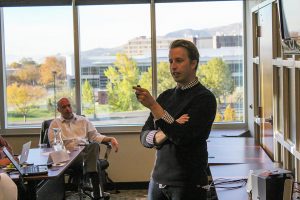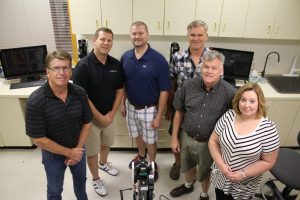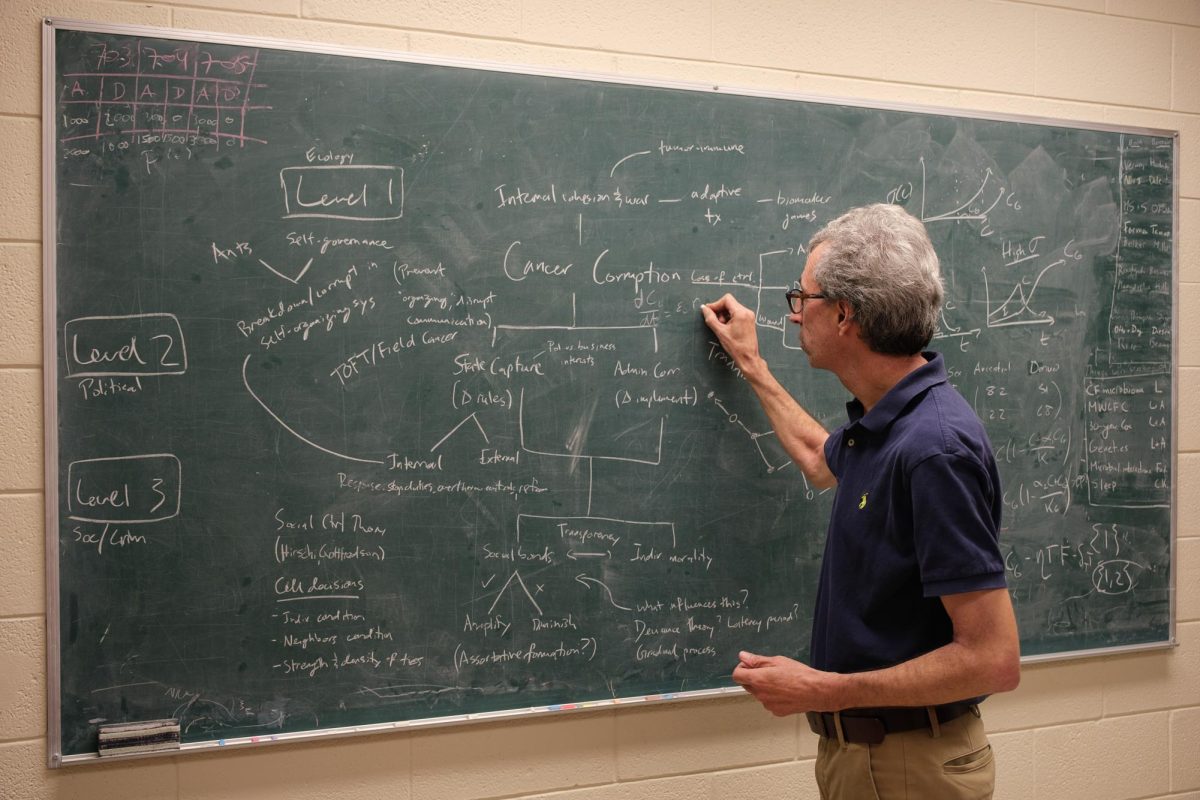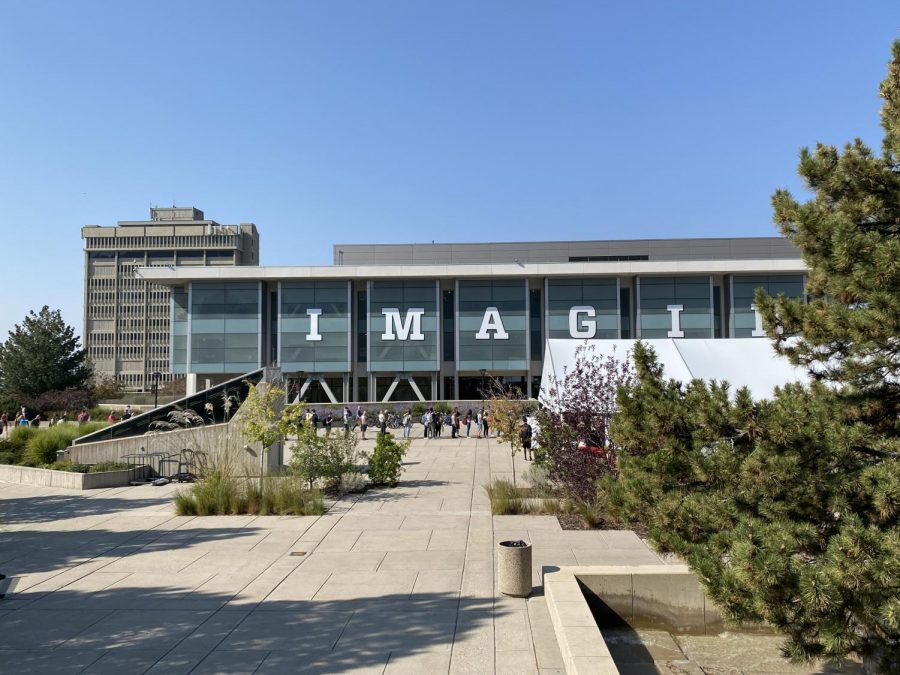Technology and Venture Commercialization (TVC) has been providing inventors at the University of Utah with the tools and technology they need to turn their inventions into a successful business since 1970. To date, TVC has helped create over 230 companies by providing a milestone-driven process to commercialize technologies and inventions created by faculty and students at the U.
“I like to think of TVC as the bridge between where ideas are created and where they make a difference,” said Jared Pieper, a student, part-time employee at TVC and inventor. “It seems so exciting to hear about the latest research and inventions from academia that will change lives, but in reality it’s not that easy. There is a lot of behind the scenes work to transform an invention into reality and that is the heart of what TVC does.”
In 2016 alone, TVC launched seven new U spin-out companies.
iCORDS, one of the companies launched last year, created a cloud-based interactive map that, according to its website, “delivers analytics-ready geoscience data and petroleum system insights harvested from global offshore scientific exploration and drilling activities.”
Another company launched last year called ItRunsInMyFamily created a website (ItRunsInMyFamily.com ) which aims to use social networking and artificial intelligence to help families share heath histories with each other, improving family health history collection (FHx). Family health history is an important risk factor and indicator for cancer development. With the
technology that the website offers, people with a high risk of cancer can work toward preventing and treating it sooner.
Other companies launched in 2016 include Blacksand Tech, Farhang Wireless, Fluidx Medical Tech, Frameshift Labs and Polarized Antenna Innovations. All of these companies share the goal of global improvement with what they’ve invented at the U.
This year, faculty and students are working to surpass the amount of technology brought to the market in 2016.

“The invention that I have been working on with fellow MBA students over past year came from a clinical need that was observed by one of our professors, John Langell,” Pieper said. “Over 150,000 women die each year from postpartum hemorrhage, and an overwhelming majority (90+ percent) occur in developing countries where existing solutions are too expensive or not available. We are developing a medical device that offers a new approach that will be re-usable, cost effective, and easily adopted in these areas of the world.”
TVC works in conjunction with the Lassonde Entrepreneur Institute, Center for Medical Innovation, Entrepreneurial Faculty Scholars and the Center for Engineering Innovation, and with the combined specialized expertise of all of these organizations, according to Pieper, “they have helped to create a commercialization enterprise at the U that simply could not have been established by TVC alone,” said Pieper.
Both TVC and Lassonde Entrepreneur Institute host events and competitions with the intention of awarding students with the funds necessary to help their innovations find a market in the future.
The Bench 2 Bedside program hosted by TVC is one such contest. It’s described on their website as an “exciting and vibrant program designed to introduce medical students, engineering students and business students to the fascinating world of medical device innovation.”
 “With the competition money we won from student competitions like Get Seeded and Bench 2 Bedside, we are now finalizing the design and starting to prepare manufactured units for clinical trials this year,” said Pieper, who, along with his team of entrepreneurs, is on the brink of successfully turning their invention into a marketable product and business. “We have partnered with Clinical Innovations, a local medical device company that specializes in global women’s health, to help us get the device approved by the FDA as well as to eventually market and distribute the product. We really hope that our device will have a large impact and save the lives of hundreds of thousands of mothers every year throughout the world.”
“With the competition money we won from student competitions like Get Seeded and Bench 2 Bedside, we are now finalizing the design and starting to prepare manufactured units for clinical trials this year,” said Pieper, who, along with his team of entrepreneurs, is on the brink of successfully turning their invention into a marketable product and business. “We have partnered with Clinical Innovations, a local medical device company that specializes in global women’s health, to help us get the device approved by the FDA as well as to eventually market and distribute the product. We really hope that our device will have a large impact and save the lives of hundreds of thousands of mothers every year throughout the world.”
TVC has also organized a board of experts called the Commercialization Engine Committee from different disciplines who are used as a resource for inventors looking for advice. In 2016, 900 professionals were added to the committee.
Speaking about the Commercialization Engine Committee, James E. Thompson, the Interim Executive Director at TVC, said, “A few years ago, our office realized one of the most efficient ways to successfully manage this growth in multifarious discoveries was to create an evergreen network of external experts from as many fields of study as possible with whom we could rely upon to assist us in this exciting, yet diverse work.”
Last year, TVC implemented the Lean Cohort program, which is for faculty who want to create real businesses based on their own inventions to create an impact in their given markets.
One Lean Cohort cycle is launched each month and runs for seven weeks. A three-person team consisting of a Principal Investigator, Entrepreneurial Lead and a Business Mentor work together to achieve certain milestones that, if met, will lead to the successful commercialization of their inventions.
According to TVC’s year-end report, this milestone-driven process gives participants three subsequent goals. “First, teams are to validate that the technology addresses an actual problem that real, potential customers are experiencing. Second, they are to validate that the technology solves that problem and that potential customers would purchase the product the team is developing. Third, they are to understand how large the market potential for their technology is.”
An example shared in TVC’s year-end report is AvanSci Bio, a company that worked to create a device that would make testing tumors much easier, more successful and more cost efficient.
According to the report,“The result was a tool called the MilliSect™ Instrument that was initially sold by the U-spinout. This technology, now owned by Roche Diagnostics, is able to extract tissue samples as small as 250 microns across (a human hair is about 75 microns across by comparison), far more precise than hand scraping samples produce. MilliSect is also automated, computer controlled, hands-free, and much less expensive than laser methods. It is saving pathologists time and, more importantly, resulting in less patient biopsies having to be redone.”
Faculty or U students interested in being a part of TVC’s Lean Cohort program should contact their business and technology development representative.

















